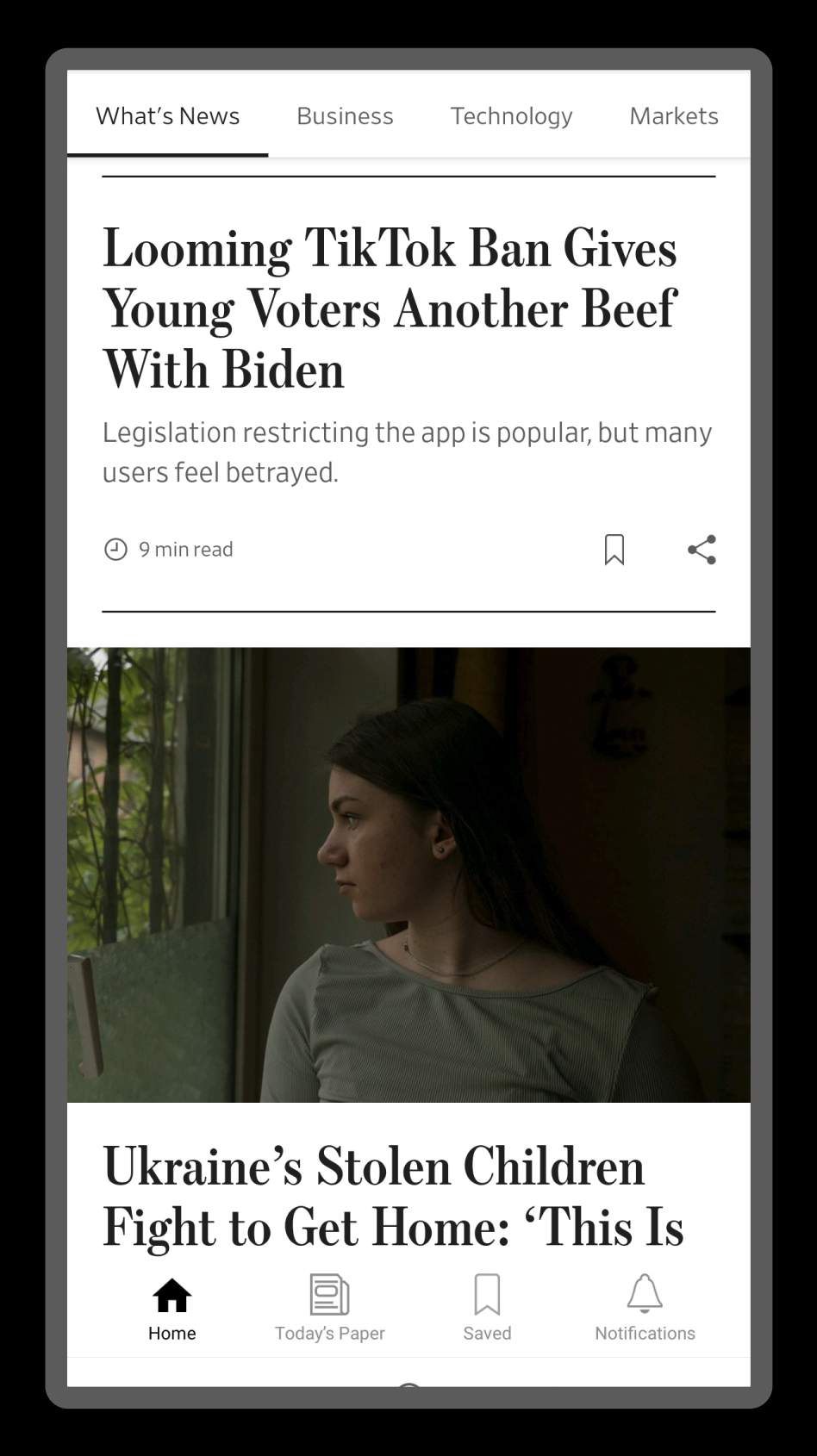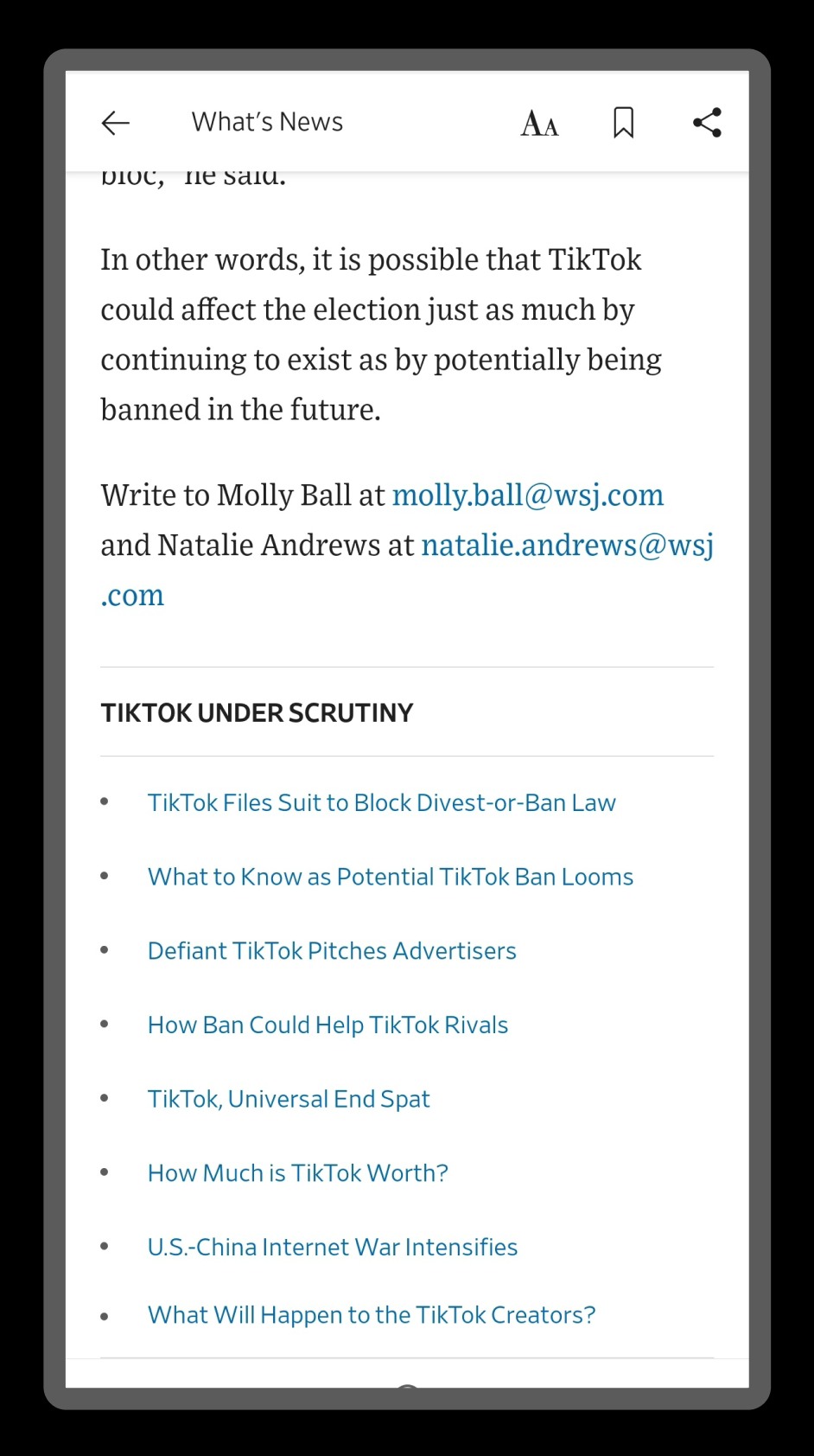Case Study: The Wall Street Journal
Guerilla Research for a New Feature

Overview and Impact
Problem
As a long-term WSJ reader, I was annoyed that the app did not have the functionality to make comments on the article. I believed many other users felt this was a major issue. My assumption required quick validation through Guerilla Research.
My Role
UX Designer
Year
2025
Tools
Miro, Paper-Prototypes, Pen
Outcome
In 3 days we gathered enough information to validate our assumptions, and understand the user needs, to guide our design of the comment feature.
Introduction & Problem
The WSJ
The Wall Street Journal is a popular newspaper and is renowned for its trustworthy and informative articles.
Identifying the Gap
As a dedicated reader, I observed that the mobile app lacked a key feature to improve user engagement. The ability to comment on articles and reply to user would be a major benefit to both the user and the WSJ. The users will be happy and the WSJ would have increase user engagement.
Goal
To use Guerilla Research to quickly gather enough information to validate my assumptions that a commenting feature would increase user motivation and engagement to use the app more. This would be measured by increase in the following metrics:
- Frequency of visits: how often users open the app (Daily Active Users/MAU)
- Session Duration: The length of time users spend in the app per session
- Time on Article: The amount of time spent on a specific article page
- Article Views: the number of articles a user opens.
- No user complaining about the Lack of Comment Feature on Google App Reviews.
Discovery and Research
Initial observation & Competitive Analysis
I observed and analysed other popular News Apps that have Comment Features including: The Guardian, The Telegraph, The BBC, and also checked the WSJ website comment section. The analysis helped to idenitfy the weaknesses and strengths of each App's commenting section.
I also checked Google Reviews to understand what users were most complaining about. I noted that the most frequent negative review was about the lack of a comment feature or the ability to listen to articles. Google Reviews is a form of secondary research/desk research, whereas Guerilla Research is primary research. Primary research is direct contact with actual users and observing their behaviour with the app and asking them direct questions.
Guerilla Research
Interview questions and A/B testing was conducted.
| Goal | To understand why users use the comment section in a newspaper and what makes a good comment section. By interviewing the relevant users, we can create a comment functionality section that meets the user needs. |
|---|---|
| Questions |
|
| Task |
A/B Testing WSJ Mobile site (can comment on articles) vs WSJ App (can’t comment on articles) What are your first impressions of WSJ |
| Users |
Sample size - 4 Duration - 15 mins |
User Personas & JTBD
User Persona
A User Persona was developed, describing the Goals, Frustrations and Personality.
Jobs-to-be-Done (JTBD) Framework
JTBD Framework describes the needs and desires of users that leads them to use an App
What are the reasons users use the WSJ?
What motivates users to use the App?
What job/task do they want to accomplish?
WHEN [SITUATION] I WANT TO [MOTIVATION] SO I CAN [DESIRED OUTCOME]
When [WSJ issues an article], users [want to comment on the article] so they can [express their viewpoint, hopefully other users agree with their viewpoint through likes or a positive reply]
When [WSJ issues an article] users [want to read other users’ comments] so they [can understand what other similar-minded users think about the topic]
Definition and Ideation
User Problem
A thoughtful WSJ needs a clear way to share their viewpoints and understand other readers' opinions on an article because the current inability to see different perspectives on articles makes their reading experience less engaging and one-sided.
Ideation
Consequently, I conceptualised ideas for an immersive and captivating commenting experience. I sketched many ideas.





Conclusion & Next Steps
Recap
This case shows the quick value of targeted Guerilla Research to gather enough information to validate our assumptions and guide the design direction.
Impact
The comment feature was clearly a feature that users wanted through the user research. Adding the comment feature will allow users to interact with content and other users. This social interaction will transform the app into an active community where like-minded people share their thoughts on various topics
Future Improvements
A more well-refined notification system can be implemented. I did not go into too much detail in iterating the notification system. The main purpose of the ideation was to focus on the commenting experience within the articles themselves. Focusing on the commenting section would create an active community of like-minded individuals engaging with the articles.
